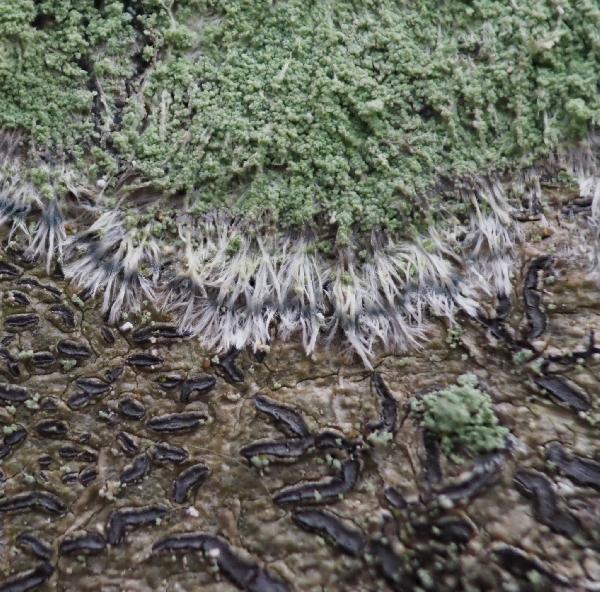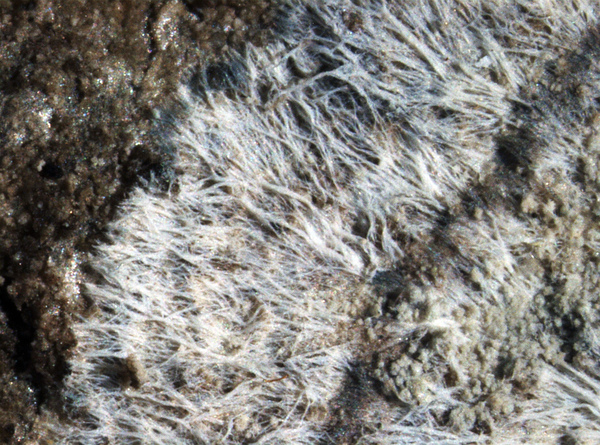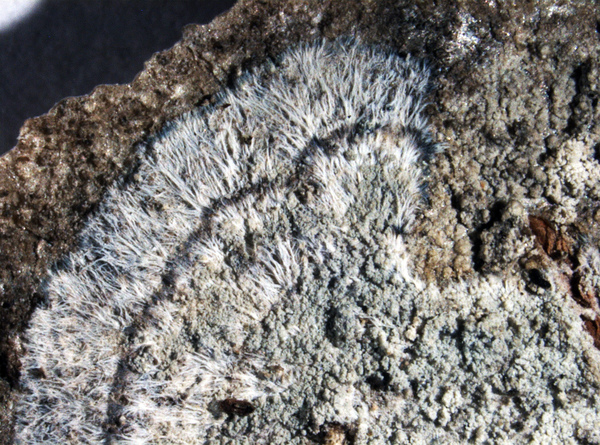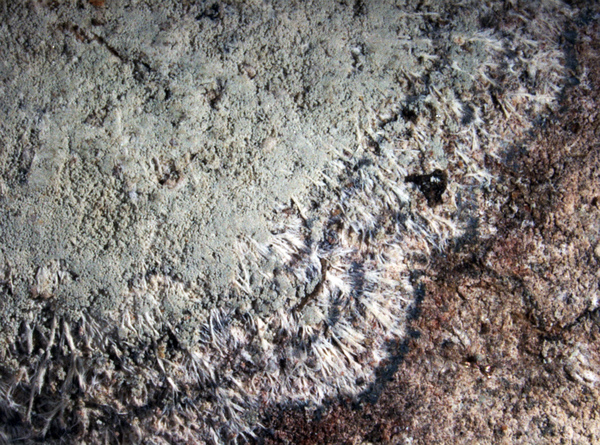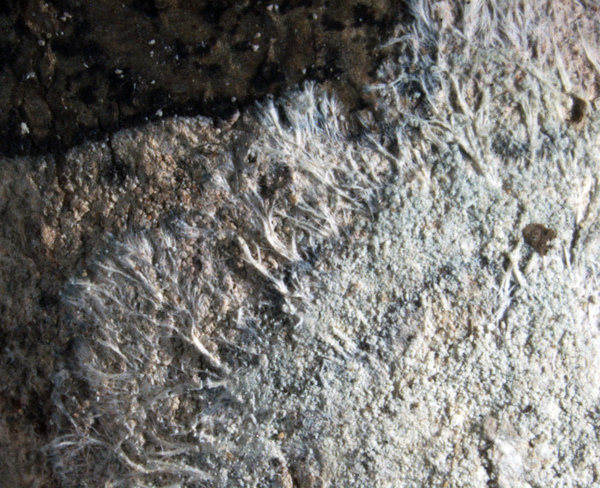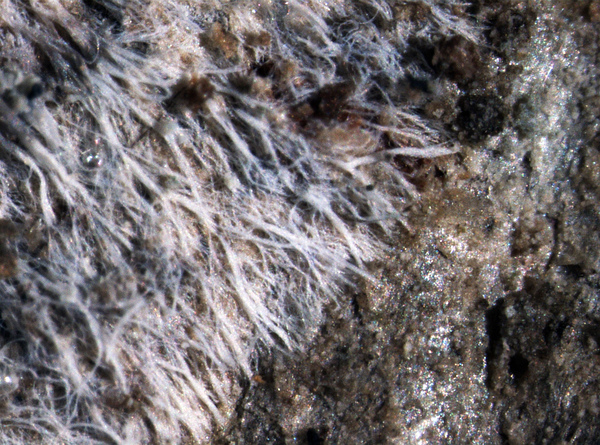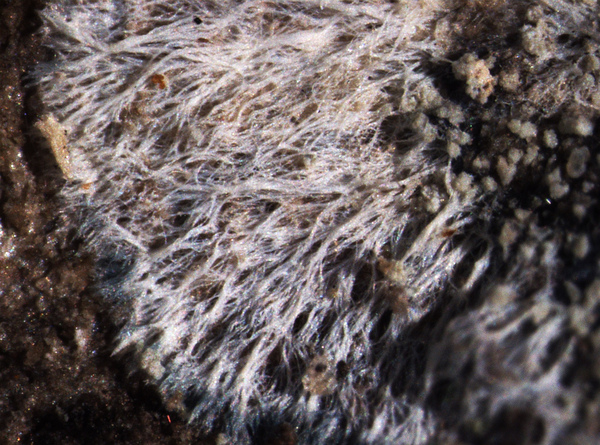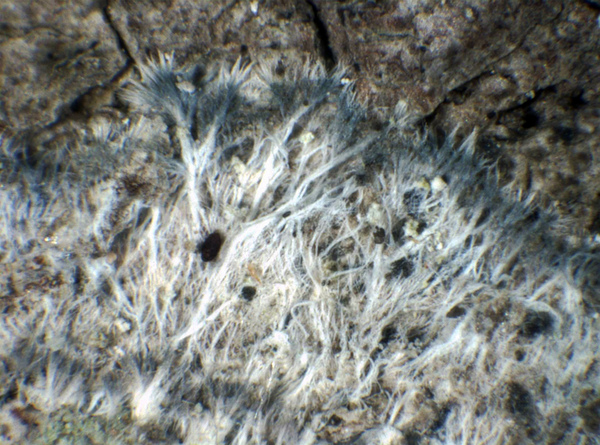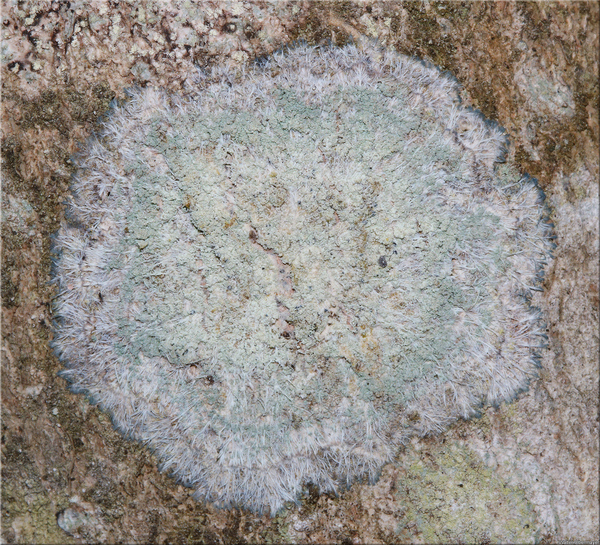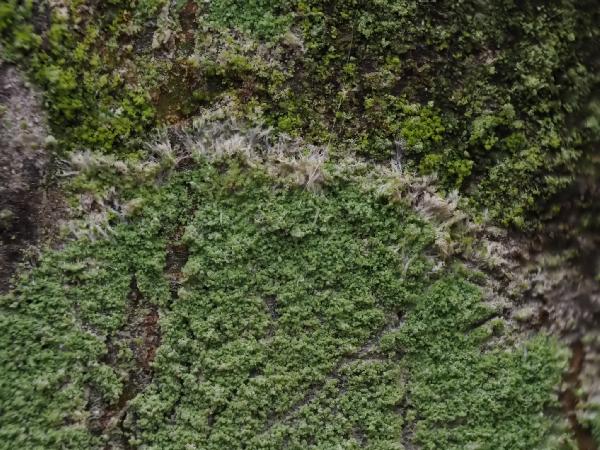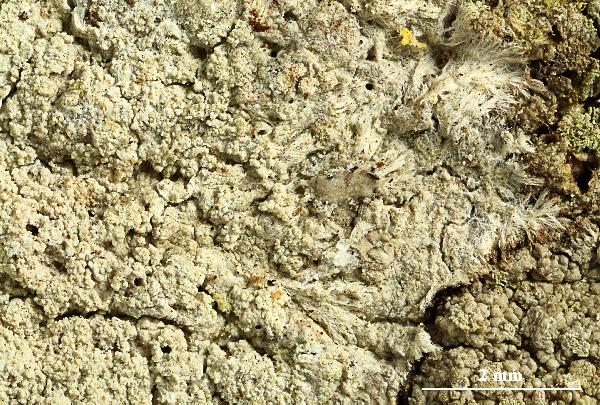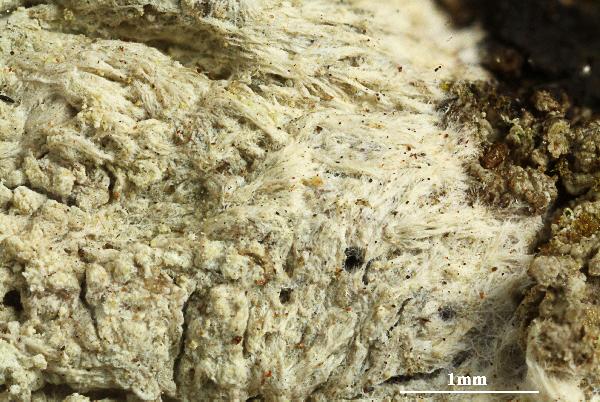Verseghya thysanophora (R.C. Harris) S.Y. Kondr., Lőkös, Farkas & Hur
in Kondratyuk & al., Acta Bot. Hung. 61, 1-2: 158, 2019. Basionym: Lecanora thysanophora R.C. Harris - in Brodo, Syllogeus 29: 31, 1981
Synonyms:
Distribution: N - VG (Ravera & al. 2019b), Frl (Ravera & al. 2019b)
Description: Thallus crustose to subleprose, thin, yellowish green (fading to pale yellow in herbarium), forming large patches delimited by a cottony, zonate, fimbriate, whitish prothallus with 4-5(-5.5)µm thick hyphae aggregated into distinct radiating strands, rarely forming a more or less continuous fringe. Soredia abundant, greenish, granulose, up to 25 µm in diam., often aggregated in up to 80 µm wide, elongated to rounded consoredia, developing directly from the prothallus, soon covering almost the entire thallus surface, giving it a subleprose appearance, Apothecia very rare, lecanorine, up to 1.3 mm across, with a pale yellowish brown to grey-brown, faintly to heavily white-pruinose disc, and a thick, raised, distinctly yellowish or whitish, ecorticate thalline margin. Thalline exciple filled with crystals; proper exciple colourless, up to 25 µm wide; epithecium with yellowish brown crystals dissolving in K; hymenium colourless, 40-90 µm high, K/I+ blue; hypothecium colourless, often inspersed with oil droplets. Asci 8-spored, clavate, very thin-walled, with a K/I+ blue, tall tholus penetrated by a faintly amyloid apical cushion, the wall K/I-, surrounded by a blue outer layer, Lecanora-type. Ascospores 1-celled, hyaline, ellipsoid, 11-14 x 6-9 µm. Photobiont chlorococcoid. Spot tests: thallus and soredia K-, or rarely K+ pale yellow then brownish, C-, KC+ yellow, P- or P+ pale yellow, UV-. Chemistry: usnic acid, atranorin, zeorin, and a set of unidentified terpenoids. Note: On bark in humid deciduous forests. This is a sorediate, mostly sterile epiphytic species described from North America (Tønsberg 1999, Harris & al. 2000), which has been often confused with sterile specimens of the mainly epilithic Haematomma ochroleucum var. ochroleucum. Both species, when sterile, are extremely similar, and also have a similar chemistry, as they produce atranorin, usnic acid, and zeorin, but V. thysanophora also contains a characteristic set of terpenoids (“Thysanophora-unknowns”) and (at least in European specimens) lacks porphyrilic acid, which is present in H. ochroleucum (Kukwa & Motiejūnaitė 2005). Several earlier records of H. ochroleucum from the Alps could actually refer to V. thysanophora.
Growth form: Crustose
Substrata: bark
Photobiont: green algae other than Trentepohlia
Reproductive strategy: mainly asexual, by soredia, or soredia-like structures (e.g. blastidia)
Commonnes-rarity: (info)
Alpine belt: absent
Subalpine belt: absent
Oromediterranean belt: absent
Montane belt: very rare
Submediterranean belt: very rare
Padanian area: absent
Humid submediterranean belt: absent
Humid mediterranean belt: absent
Dry mediterranean belt: absent
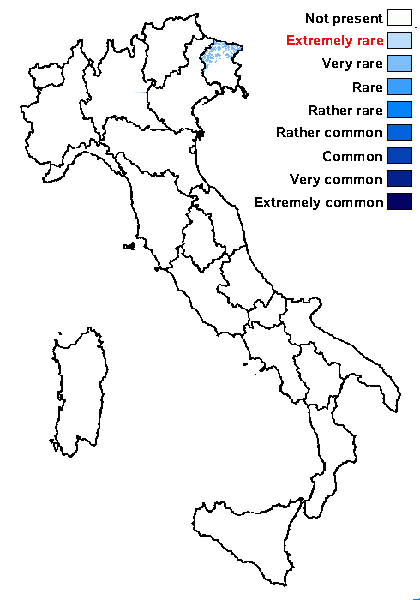
Predictive model
Herbarium samples


P.L. Nimis; Owner: Department of Life Sciences, University of Trieste
Italy, Friuli Venezia Giulia, Udine, Bosco della Stua, Lago di Sauris, 1000m
09.09.2016
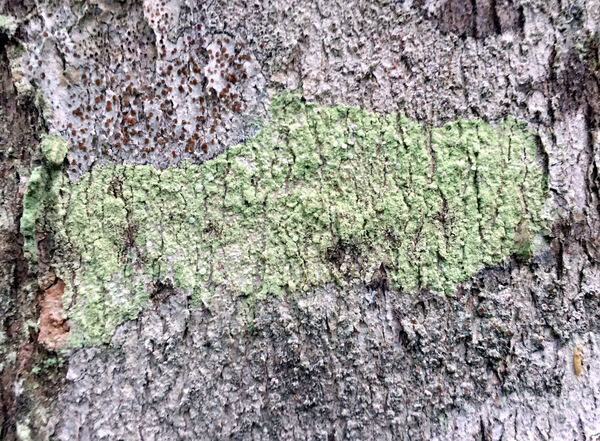

P.L. Nimis; Owner: Department of Life Sciences, University of Trieste
Italy, Friuli Venezia Giulia, Udine, Bosco della Stua, Lago di Sauris, 1000m
09.09.2016
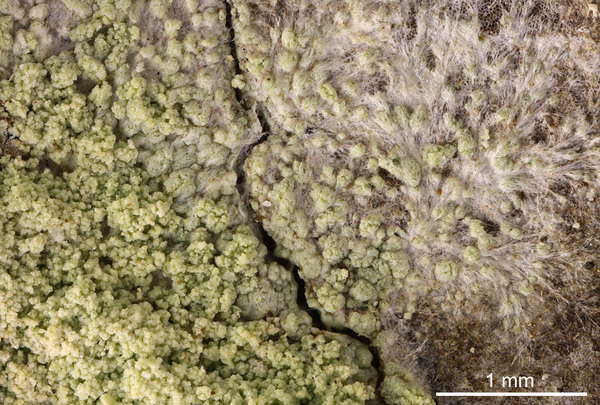

Felix Schumm – CC BY-SA 4.0
[14621], Seychelles, Mahe, Westspitze, Anse Jasmin Estate (Hotel Auberge des Seychelles), 4°38.648' S, 55°23.111' E, ca. 20 m. Leg. F. Schumm & J.-P. Frahm 08.10.2008, det. F, Schumm conf. A. Aptroot 2008
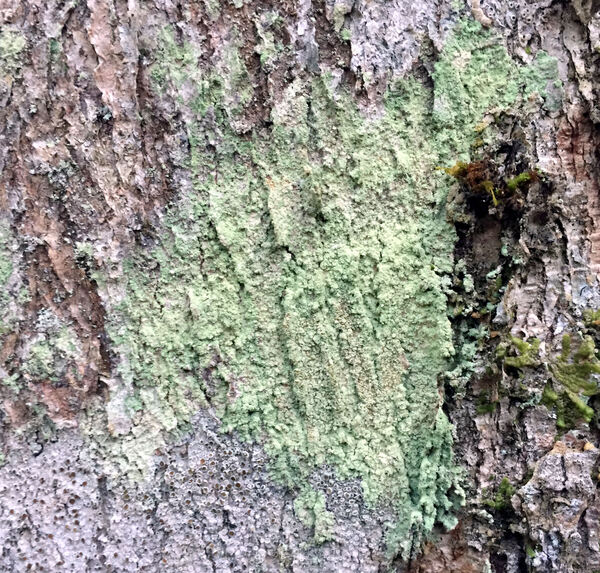

P.L. Nimis; Owner: Department of Life Sciences, University of Trieste
Italy, Friuli Venezia Giulia, Udine, Bosco della Stua, Lago di Sauris, 1000m
09.09.2016
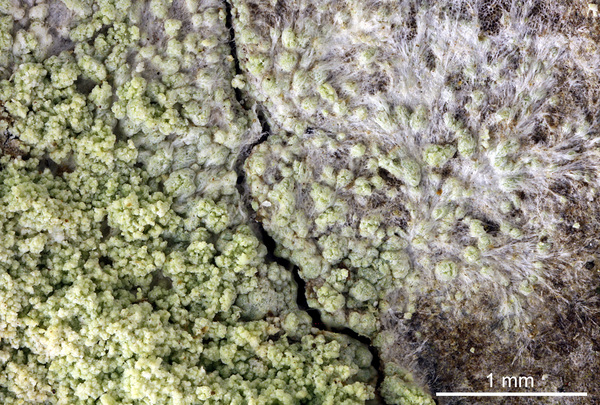

Felix Schumm – CC BY-SA 4.0
[14621], Seychelles, Mahe, Westspitze, Anse Jasmin Estate (Hotel Auberge des Seychelles), 4°38.648' S, 55°23.111' E, ca. 20 m. Leg. F. Schumm & J.-P. Frahm 08.10.2008, det. F, Schumm conf. A. Aptroot 2008
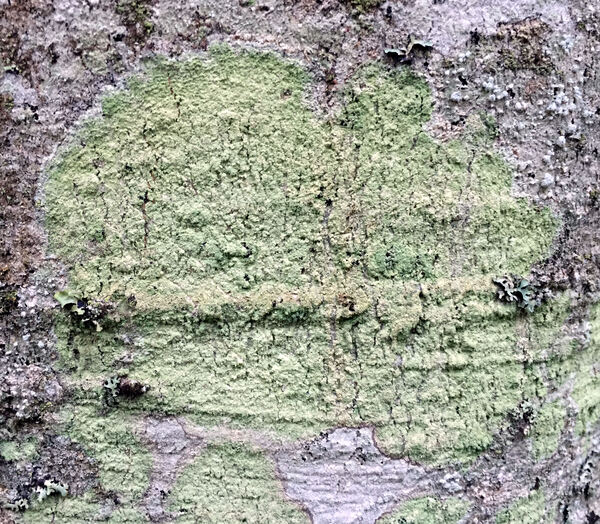

P.L. Nimis; Owner: Department of Life Sciences, University of Trieste
Italy, Friuli Venezia Giulia, Udine, Bosco della Stua, Lago di Sauris, 1000m
09.09.2016
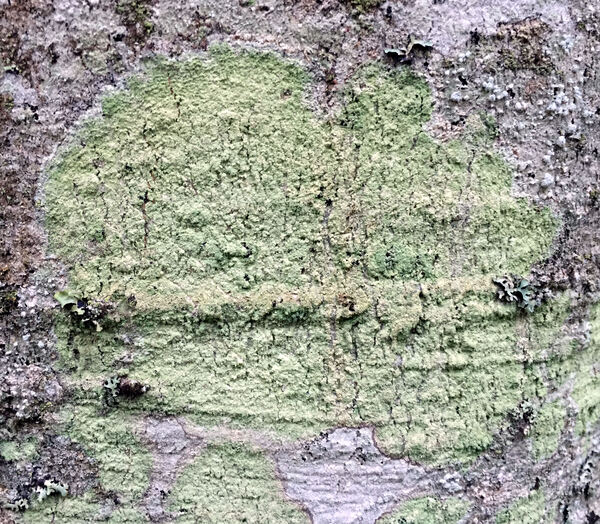

P.L. Nimis; Owner: Department of Life Sciences, University of Trieste
Italy, Friuli Venezia Giulia, Udine, Bosco della Stua, Lago di Sauris, 1000m
09.09.2016
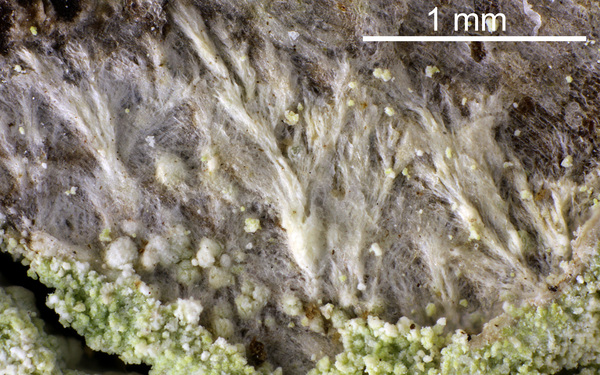

Felix Schumm – CC BY-SA 4.0
[14621], Seychelles, Mahe, Westspitze, Anse Jasmin Estate (Hotel Auberge des Seychelles), 4°38.648' S, 55°23.111' E, ca. 20 m. Leg. F. Schumm & J.-P. Frahm 08.10.2008, det. F, Schumm conf. A. Aptroot 2008
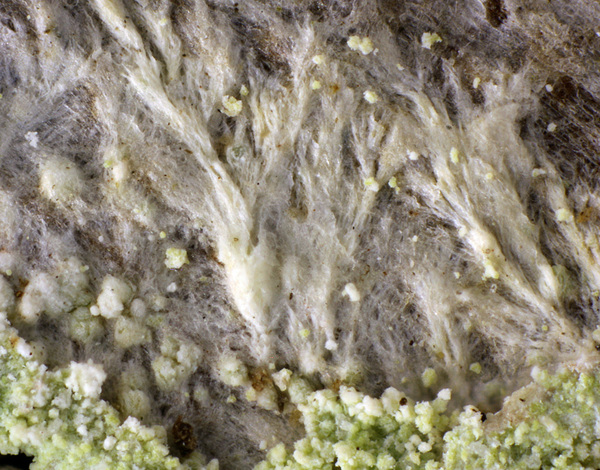

Felix Schumm CC BY-SA 4.0
[14621], Seychelles, Mahe, Westspitze, Anse Jasmin Estate (Hotel Auberge des Seychelles), 4°38.648' S, 55°23.111' E, ca. 20 m. Leg. F. Schumm & J.-P. Frahm 08.10.2008, det. F, Schumm conf. A. Aptroot 2008
Growth form: Crustose
Substrata: bark
Photobiont: green algae other than Trentepohlia
Reproductive strategy: mainly asexual, by soredia, or soredia-like structures (e.g. blastidia)
Commonnes-rarity: (info)
Alpine belt: absent
Subalpine belt: absent
Oromediterranean belt: absent
Montane belt: very rare
Submediterranean belt: very rare
Padanian area: absent
Humid submediterranean belt: absent
Humid mediterranean belt: absent
Dry mediterranean belt: absent

Predictive model
| Herbarium samples |


P.L. Nimis; Owner: Department of Life Sciences, University of Trieste
Italy, Friuli Venezia Giulia, Udine, Bosco della Stua, Lago di Sauris, 1000m
09.09.2016


P.L. Nimis; Owner: Department of Life Sciences, University of Trieste
Italy, Friuli Venezia Giulia, Udine, Bosco della Stua, Lago di Sauris, 1000m
09.09.2016


Felix Schumm – CC BY-SA 4.0
[14621], Seychelles, Mahe, Westspitze, Anse Jasmin Estate (Hotel Auberge des Seychelles), 4°38.648' S, 55°23.111' E, ca. 20 m. Leg. F. Schumm & J.-P. Frahm 08.10.2008, det. F, Schumm conf. A. Aptroot 2008


P.L. Nimis; Owner: Department of Life Sciences, University of Trieste
Italy, Friuli Venezia Giulia, Udine, Bosco della Stua, Lago di Sauris, 1000m
09.09.2016


Felix Schumm – CC BY-SA 4.0
[14621], Seychelles, Mahe, Westspitze, Anse Jasmin Estate (Hotel Auberge des Seychelles), 4°38.648' S, 55°23.111' E, ca. 20 m. Leg. F. Schumm & J.-P. Frahm 08.10.2008, det. F, Schumm conf. A. Aptroot 2008


P.L. Nimis; Owner: Department of Life Sciences, University of Trieste
Italy, Friuli Venezia Giulia, Udine, Bosco della Stua, Lago di Sauris, 1000m
09.09.2016


P.L. Nimis; Owner: Department of Life Sciences, University of Trieste
Italy, Friuli Venezia Giulia, Udine, Bosco della Stua, Lago di Sauris, 1000m
09.09.2016


Felix Schumm – CC BY-SA 4.0
[14621], Seychelles, Mahe, Westspitze, Anse Jasmin Estate (Hotel Auberge des Seychelles), 4°38.648' S, 55°23.111' E, ca. 20 m. Leg. F. Schumm & J.-P. Frahm 08.10.2008, det. F, Schumm conf. A. Aptroot 2008


 DOLICHENS
DOLICHENS
